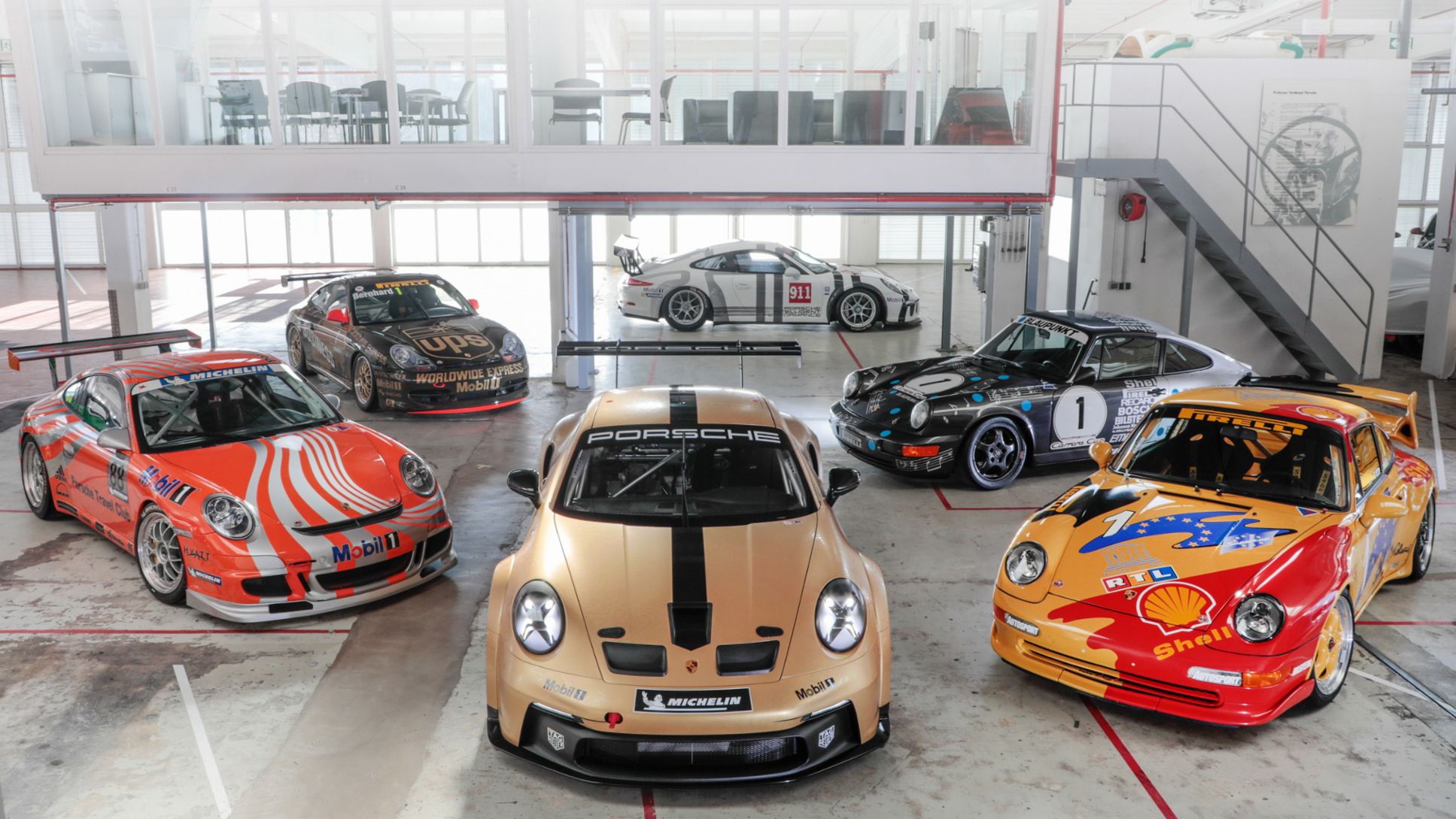Since then, the Cup 911 has evolved into one of the most widely produced racing vehicles in the world. The anniversary model will be campaigned in the 2023 season of the Porsche Mobil 1 Supercup: Porsche Motorsport runs the Porsche 911 GT3 Cup with prominent guest drivers at selected races.
The tradition of racing a VIP car in the Porsche Supercup is long. For the 2023 season, a very special Porsche 911 GT3 Cup will be helmed by famous guest drivers at selected rounds of the international one-make cup: the 5,000th racing car based on a Porsche 911 built for the one-make cup. To commemorate this, the No. 911 car will be decked out in a special livery, which distinguishes it from the field of around 30 other racing cars in the Porsche Mobil1 Supercup.

“More than 5,000 Cup 911s – this impressive figure symbolises the huge success of our worldwide Porsche one-make cups like no other. It also stands for the high level of popularity that Porsche enjoys among teams, racing professionals, young drivers and amateur racers around the world. No other Porsche racing car has been produced in such large numbers or raced more frequently,” comments Oliver Köppen, Manager One-Make Series and GT Sport, Porsche Motorsport Sales.
What began in 1990 with the first Cup 911 in the Porsche Carrera Cup Deutschland has now turned into a success story with a total of 34 Porsche-approved one-make cup series contested around the world. Over the decades, the Cup concept spread from the Development Centre in Weissach to almost every continent. Porsche Carrera Cups are currently run in Europe, America, Asia, the Middle East and Australia. The international Porsche Supercup has been at the pinnacle since 1993. For the 2023 season, the Supercup is contested at eight European Formula 1 weekends as part of the support programme.

“Since the debut of the Porsche Carrera Cup Deutschland in April 1990, the Porsche one-make cups have evolved remarkably. This season, the number has increased to 34 series worldwide – and almost all rely on the latest 992-generation Porsche 911 GT3 Cup. This success was largely due to our customer teams, to whom I owe a special thank you,” emphasises Michael Dreiser, Director Sales Porsche Motorsport.
From series production to thoroughbred GT racing car
In 1990, the strategy behind the Porsche Carrera Cup Deutschland was clear: technology from series production should prove itself on the racetrack, and the manufacturing of all Cup cars was centralised at Porsche. The Porsche 911 Carrera RS (generation 964) served as the basis. It was only slightly modified for the one-make cup series by way of safety equipment, a sports suspension racing and an exhaust system.
However, with the introduction of increasingly comprehensive safety regulations and the internationalisation of the one-make cup concept, the Cup 911 underwent a transformation into a thoroughbred racing car from one model generation to the next. Accordingly, the current Porsche 911 GT3 Cup (model series 992) includes features such as a computer-aided safety cell, a sequential dog-box transmission with shift paddles on the steering wheel, carbon-fibre body and cockpit components, and a rear wing that can be adjusted in eleven positions.
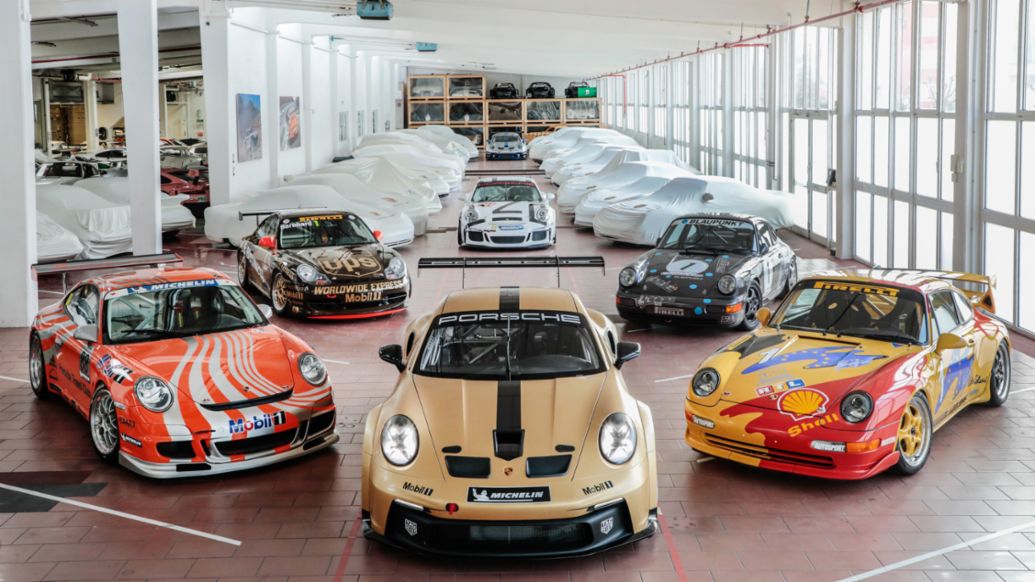
However, the road-legal GT3 and GT3 Cup racer still share many technical components. For example, the six-cylinder boxer engine is virtually identical, apart from details such as the racing exhaust system and special engine electronics. The unchanged output of 375 kW (510 PS) means, among other things, that the four-litre naturally aspirated engine does not need to undergo servicing during an entire Supercup or Carrera Cup season.
The global success story of the Porsche one-make cups and the resulting large number of cup cars require an exceptional production process. The racing cars developed by Porsche Motorsport in Weissach roll off the same assembly line as the 911 production models at the main facility in Stuttgart-Zuffenhausen. It takes not more than almost eight hours to build a Porsche 911 GT3 Cup – that, too, is a record.
All generations of the Cup 911
Porsche 911 Carrera 2 Cup (964)
Base model: Porsche 911 Carrera RS
Debut: 1990 (Porsche Carrera Cup Deutschland)
Displacement: 3.6 litres
Power output: 195 kW (265 PS) to 202 kW (275 PS)
Units built: 297
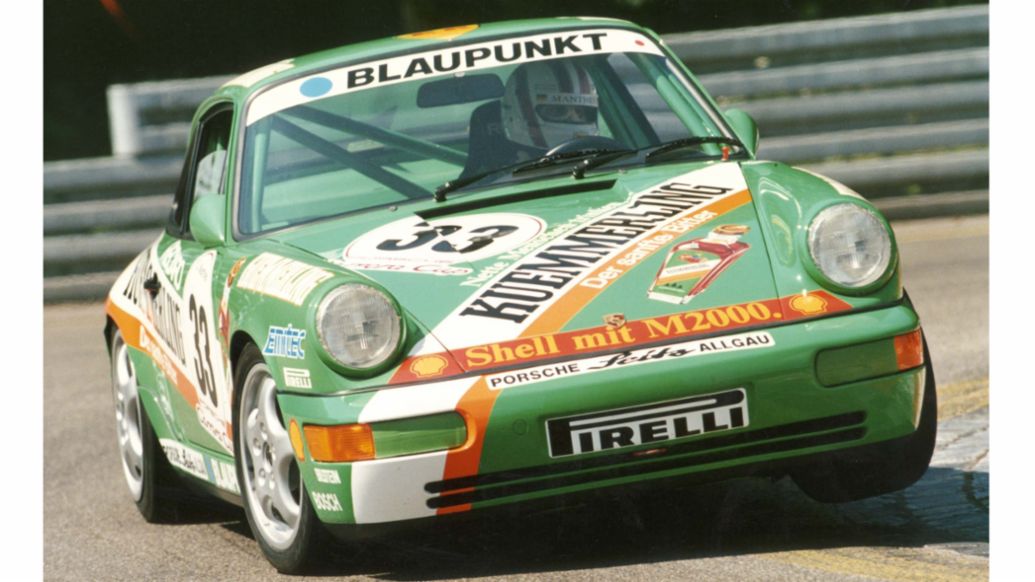
Road and racing vehicles were very similar. The standard Porsche 911 Carrera RS was stripped of all comforts and fitted with a roll cage, bucket seat, safety harness belts, a sports suspension, racing tyres, a modified brake system and sports exhaust. A differential lock and shorter ratios for third to fifth gear were also added. ABS and a three-way catalytic converter were retained.
Porsche 911 Cup (993)
Base model: Porsche 911 Carrera RS
Debut: 1994 (Porsche Carrera Cup Deutschland)
Displacement: 3.8 litres
Power output: 228 kW (310 PS) to 232 kW (315 PS)
Units built: 186
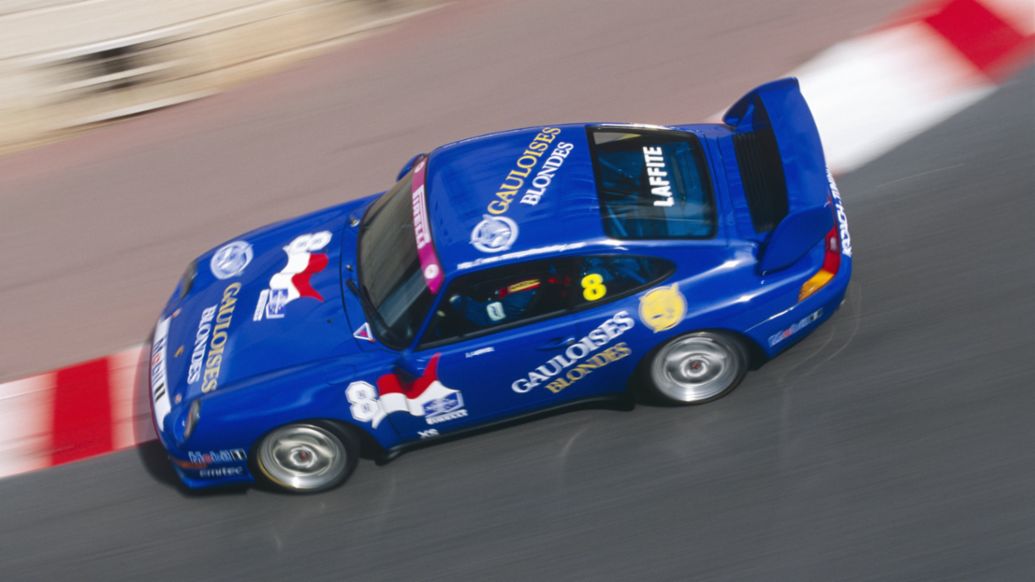
One of the most important innovations compared to the 964 was the multi-link rear axle. A larger, fixed rear wing was introduced in 1995, as well as side skirts and the front spoiler from the Carrera RS production model.
Porsche 911 GT3 Cup (996)
Base model: Porsche 911 GT3
Debut: 1998 (Porsche Supercup)
Displacement: 3.6 litres
Power output: 265 kW (360 PS) to 287 kW (390 PS)
Units built: 873
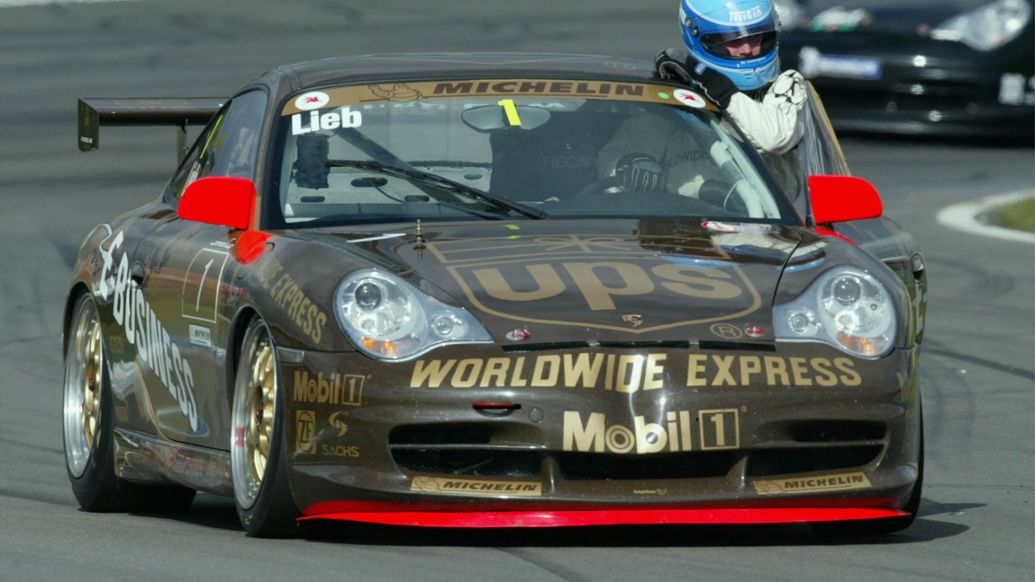
The third-generation Cup-911 was powered by a water-cooled, six-cylinder engine for the first time. The power output gradually increased from 265 kW (360 PS) to 287 kW (390 PS). This generation also experienced several aerodynamic evolutions: from 2001, a massive rear wing doubled the downforce on the rear axle, and from 2002 it could be adjusted in seven settings. The teardrop headlights taken from the Porsche 911 Turbo also added a new look.
Porsche 911 GT3 Cup (997)
Base model: Porsche 911 GT3 und GT3 RS
Debut: 2005 (Porsche Supercup)
Displacement: 3.6 – 3.8 litres
Power output: 294 kW (400 PS) to 331 kW (450 PS)
Units built: 1,485
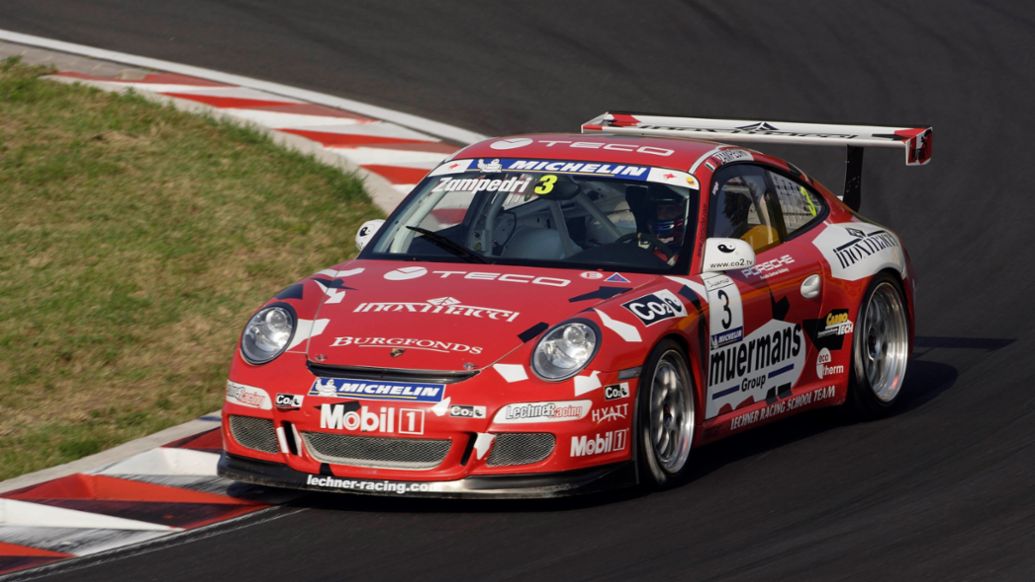
The new front section with an adjustable spoiler as well as the larger rear wing generated around 40 percent more downforce compared to the predecessor model. The evolution model from 2010 was based on the 911 GT3 RS production car and inherited its 3.8-litre engine.
Porsche 911 GT3 Cup (991.1)
Base model: Porsche 911 GT3 Cup
Debut: 2013 (Porsche Supercup)
Displacement: 3.8 litres
Power output: 338 kW (460 PS)
Units built: 673
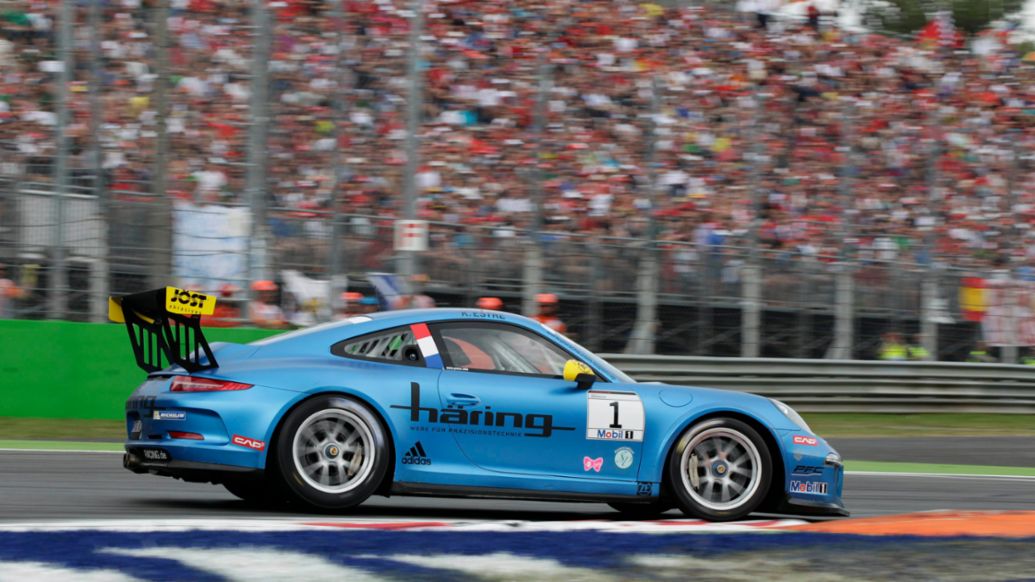
The 991.1-generation 911 GT3 Cup was the first one-make cup car from Porsche to feature shift paddles on the steering wheel. A newly developed roll cage and rescue hatch in the roof increased safety.
Porsche 911 GT3 Cup (991.2)
Base model: Porsche 911 GT3 Cup
Debut: 2017 (Porsche Supercup)
Displacement: 4.0 litres
Power output: 357 kW (485 PS)
Units built: 737
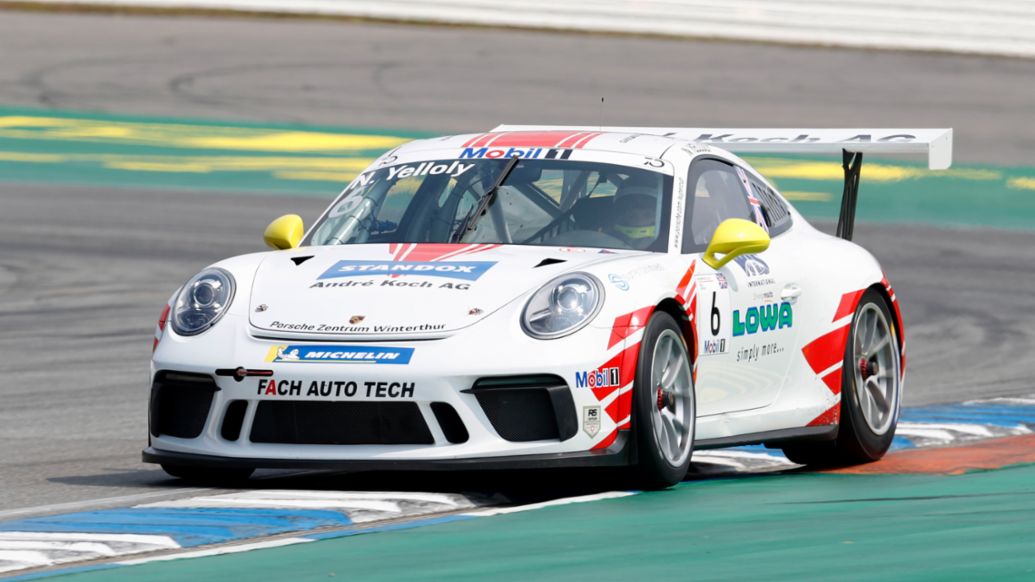
Like the production vehicle, from 2017, the Cup 911 was also mounted with the newly developed flat-six engine, now with a four-litre displacement.
Porsche 911 GT3 Cup (992)
Base model: Porsche 911 GT3 Cup
Debut: 2021 (Porsche Supercup)
Displacement: 4.0 litres
Power output: 375 kW (510 PS)
Units built: 782 (until March 2023)
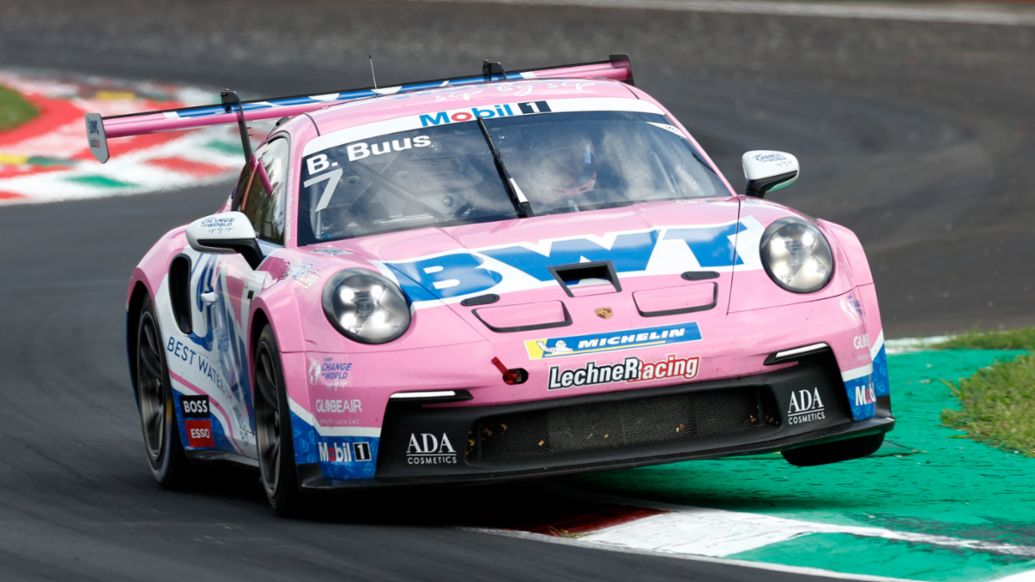
The main visual distinction of the current model series is the widened body from the Porsche 911 Turbo with an adjustable spoiler lip at the front and a rear wing with swan-neck mounting. For the first time, the cockpit is fully digital. The four-litre boxer engine now puts out 375 kW (510 PS) and is designed to run on synthetic fuel.
